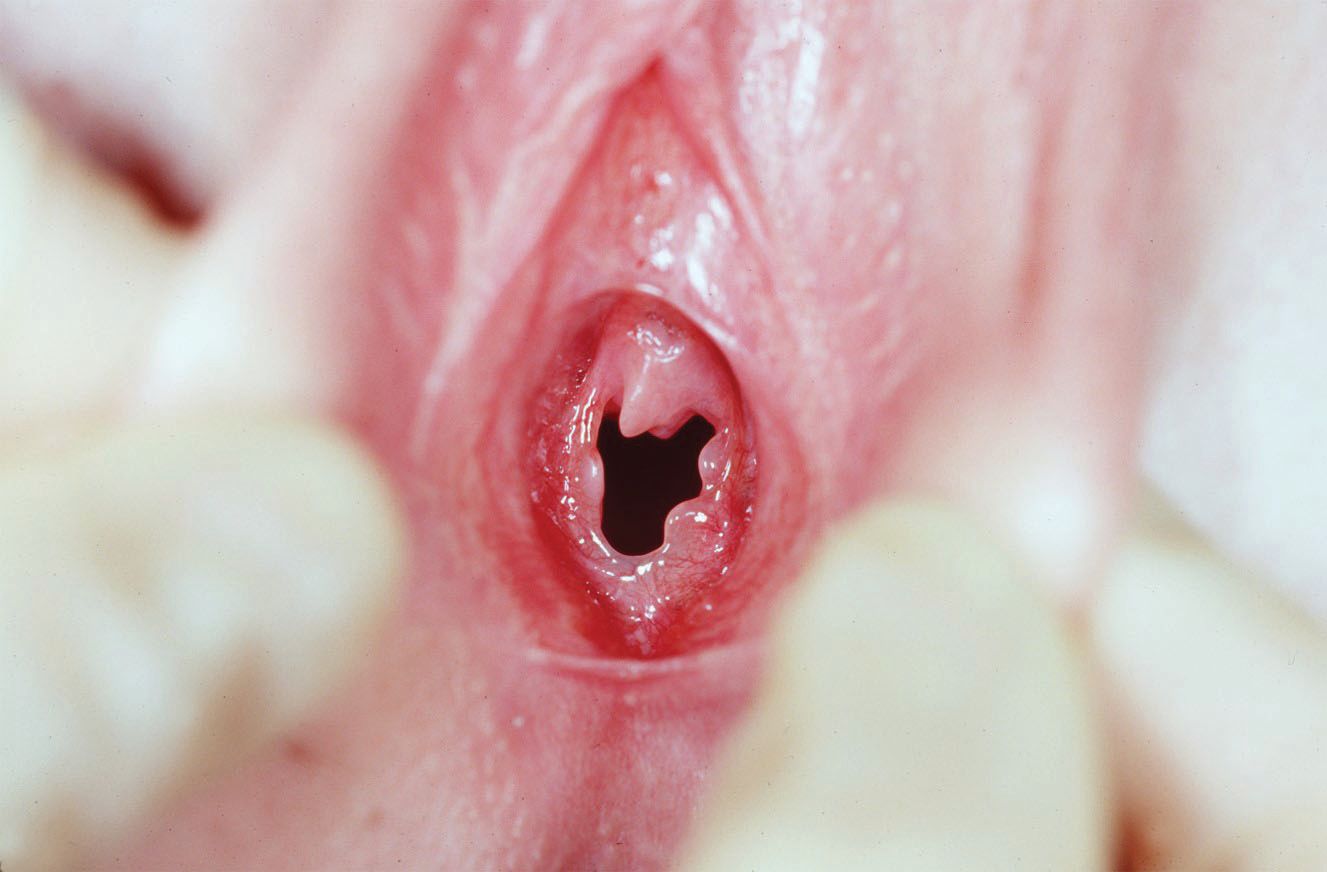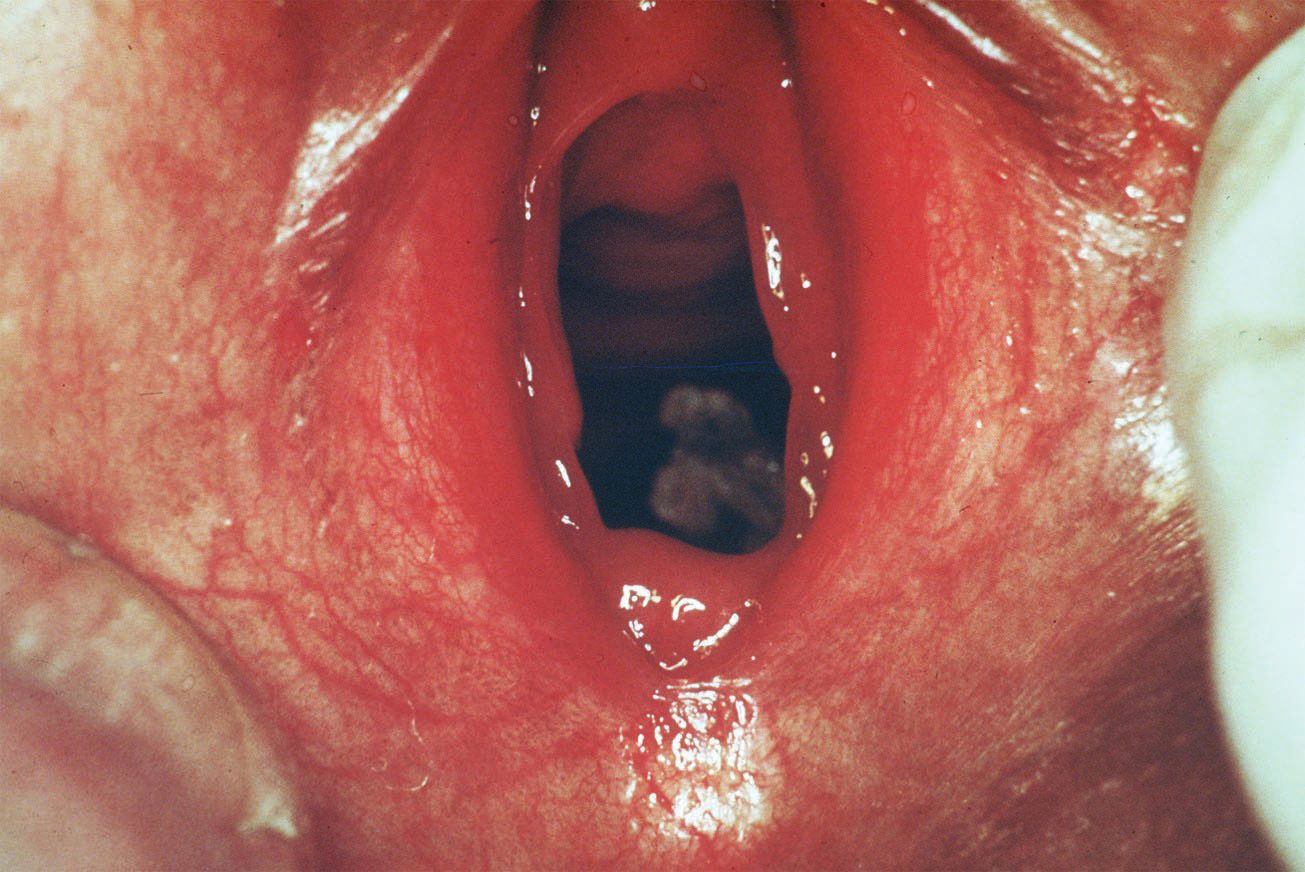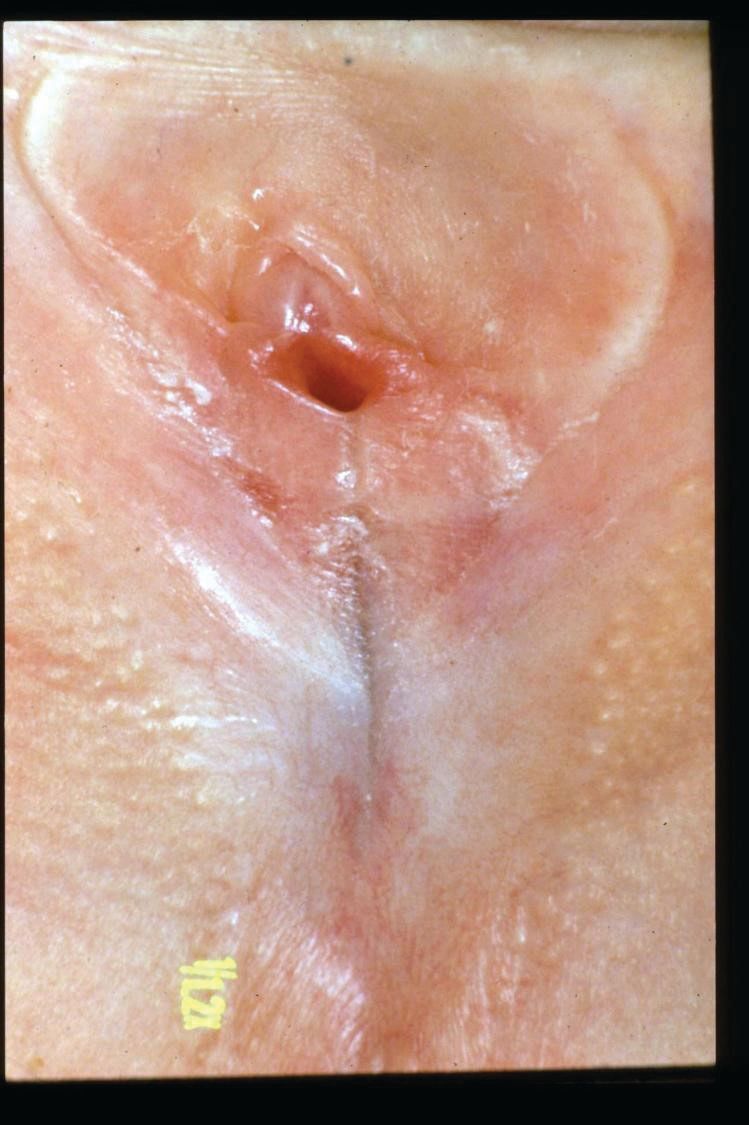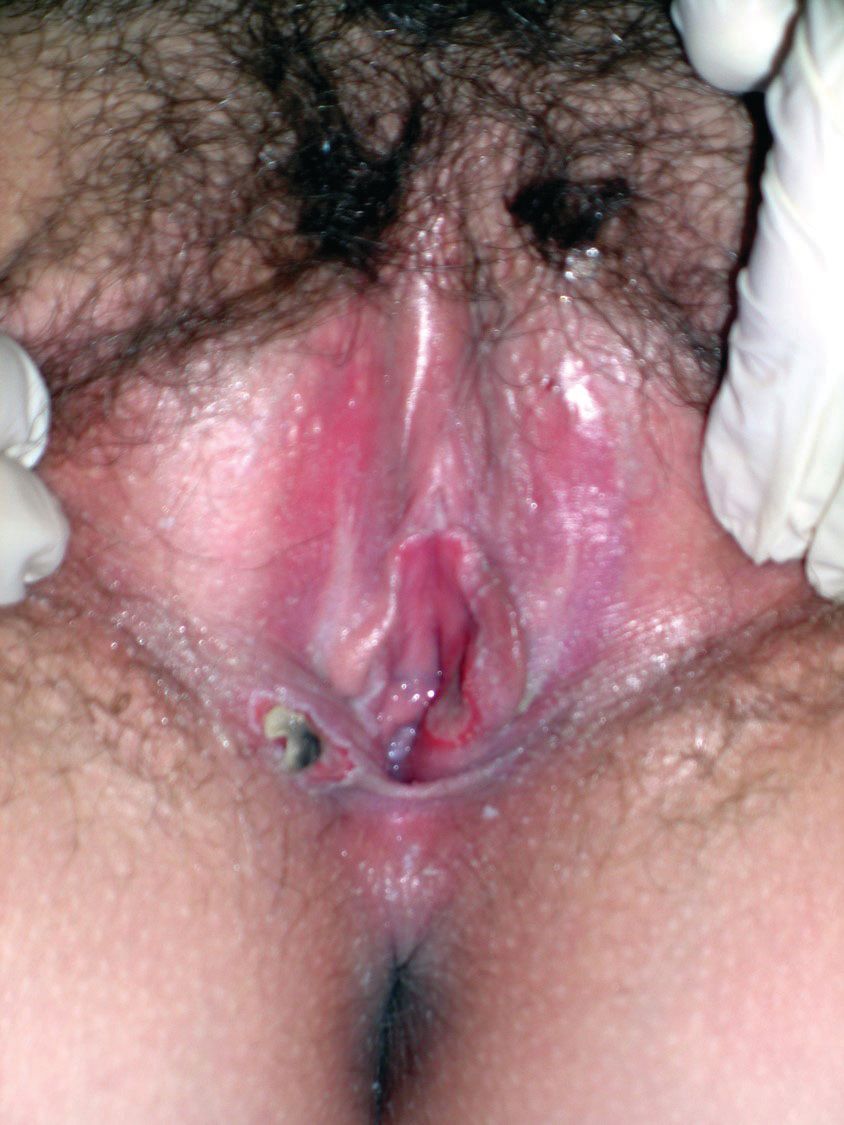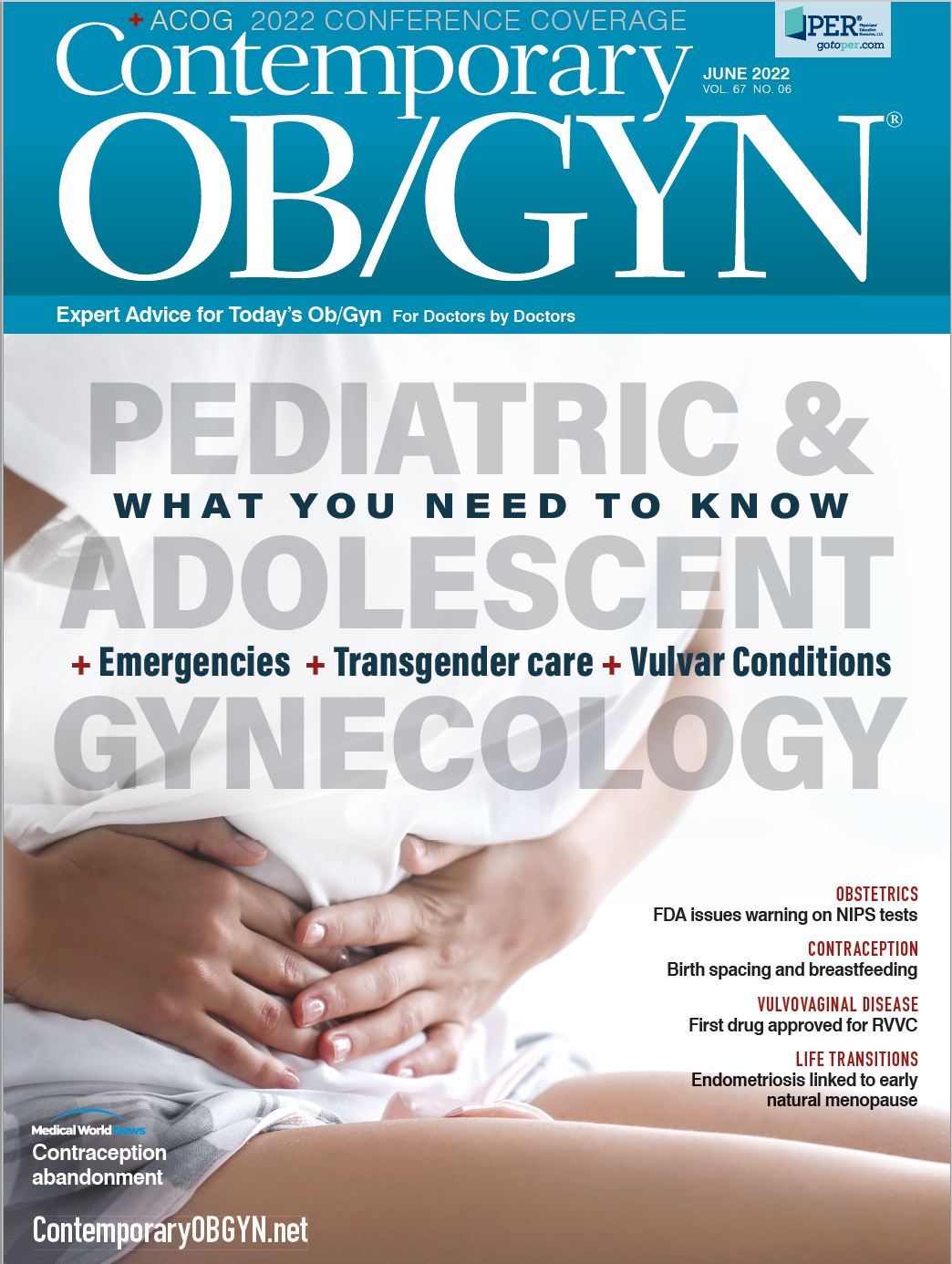View as PDFJessica Y. Shim, MD, is a clinical instructor in the Department of Obstetrics, Gynecology, and Reproductive Biology at Harvard Medical School in Boston, Massachusetts. She is also an attending physician of the Division of Pediatric and Adolescent Gynecology in the Department of Surgery at Boston Children’s Hospital.
Danielle T. Cipres, MD, is a clinical instructor in the Department of Obstetrics, Gynecology, and Reproductive Biology at Harvard Medical School in Boston, Massachusetts. She is also a clinical fellow in the Division of Pediatric and Adolescent Gynecology in the Department of Surgery at Boston Children’s Hospital.
Takeaways
- A thorough history taking and external examination often yield a clinical diagnosis for vulvovaginal conditions. When intravaginal examination is required to rule out a foreign body, vaginoscopy or an examination under anesthesia may be required.
- Nonspecific vulvovaginitis is a common complaint that is often responsive to improved vulvar hygiene measures. Antibiotics should be initiated only if a specific pathogen is isolated, if purulent discharge is present, or if symptoms persist despite hygiene measures.
- Labial adhesions are common in prepubertal girls due to the hypoestrogenic vulva, and a topical estrogen or steroid should be prescribed if the patient is symptomatic.
- Lichen sclerosus is a chronic dermatologic condition that requires treatment with high-potency topical steroids followed by maintenance therapy and long-term follow-up.
- Vulvar aphthous ulcers can occur in isolation or after viral illness and require exclusion of infectious causes followed by symptomatic management.
Vulvovaginal complaints make up the majority of gynecologic clinic visits by prepubertal girls.
Vulvovaginal symptoms can be caused by infection, trauma, hygiene, dermatologic conditions, and congenital anomalies. Though these conditions also may present after puberty, this article will focus on common vulvar conditions in the prepubertal pediatric population.
Most pediatric vulvar conditions can be clinically diagnosed with history and physical exam alone, although certain conditions may require additional testing. History taking often requires gathering information from both the child and parent and should focus on the timing, duration, and characterization of the symptoms, including itching, pain, burning, and associated genitourinary and gastrointestinal symptoms such as dysuria, urinary retention, constipation, and stooling habits.1
Vulvar hygiene should be elicited, including the use of perfumed soaps, bubbles, detergents, or wipes applied to the external and internal genitalia, as well as who performs these vulvar hygiene practices (child or parent).
A specific inquiry should address whether the child wipes front to back, has inserted any foreign objects into the vagina, or has experienced any inappropriate touching of their genitals. Symptom triggers and irritants should be investigated, as well as the outcomes of prior palliative measures and interventions. A report of vaginal bleeding, discharge, or malodor is nonspecific but may raise concern for tissue injury, infection, or abuse.
External pelvic examination should be performed to assess the patient’s pubertal development, including Tanner staging and documentation of the degree of estrogenization of the vestibule and vaginal mucosa.
Genital examination of a prepubertal child can be accomplished by asking the child to make a frog leg or butterfly position, a cannonball position (to better assess the perianal region), or a hands and knees position.1 Skin changes and tissue injuries such as excoriations, abrasions, or bruising are often immediately apparent.
Of note, the vestibule, hymen, and vaginal mucosa of prepubertal girls commonly appear erythematous, thin, and atrophic due to the poor estrogenization of the tissues. Careful attention should be paid to deviations from normal vulvar anatomy. The patient should always be verbally prepared for the anticipation of touching of the skin and tissue and be reassured that the examination will not hurt.
Most pediatric gynecology exams will be tailored to the complaints and not require speculum examination. Gentle traction of the labia majora outward allows assessment of hymenal patency and visualization into the lower vagina (Figure 1).
If necessary, further assessment of vaginal patency and length may be performed with a saline-moistened cotton-tipped applicator, which can be used to obtain bacterial cultures if indicated.1 If further intravaginal evaluation is indicated, a vaginoscopy in the office or under anesthesia may be performed.
Vulvovaginitis
Nonspecific vulvovaginitis is the most common (75%) cause of vaginitis in young girls.2 Pediatric patients typically describe vulvar discomfort, pruritus, malodor, or vaginal discharge that may be purulent or tinged with blood.
Signs include erythema, mucoid vaginal discharge, and poor hygiene—or there may be no findings. The prepubertal vulva and vagina are hypoestrogenic and susceptible to irritants such as soaps, detergents, bath bombs, urine, stool, and perfumed products.3-6
In the absence of purulent discharge, antibiotics are rarely indicated. Most symptoms resolve within 2 to 3 weeks after vulvar hygiene measures are instituted, including soaking in plain water without soap, standing up to shower, patting dry, wiping front to back, wearing cotton underwear and loose clothing, and avoiding irritants.7 Barrier emollients such as petroleum jelly or zinc oxide can be applied externally for symptomatic relief.
Additional testing with bacterial vaginal culture and vaginoscopy may be indicated to evaluate for specific causes of vulvovaginitis if symptoms persist or vaginal bleeding or purulent discharge is present, raising suspicion for a specific etiology.3,4
Mixed vaginal flora is a typical culture result in nonspecific vulvovaginitis. Respiratory (eg, Streptococcus pyogenes, Staphylococcus aureus, Streptococcus pneumoniae, Haemophilus influenzae, Neisseria meningitidis, Moraxella catarrhalis) and enteric (eg, Escherichia coli, Enterococcus faecalis, Klebsiella pneumoniae, Proteus mirabilis, Pseudomonas, Shigella, Yersinia) pathogens are commonly isolated on bacterial vaginal swabs in patients with vaginitis as well as those who are asymptomatic. Therefore they do not always represent an infection.2-4
Colonization is thought to occur by autoinoculation, with group A streptococci accounting for 20% of infectious cases. It should be treated with a 10-day course of oral amoxicillin.3,4
Other respiratory and enteric flora isolates often resolve with hygiene measures alone but should be treated based on sensitivities if symptoms are persistent or if specific infectious causes such as Yersinia or Shigella are isolated.3-6
Though approximately 3% to 4% of prepubertal girls are colonized with candida, vulvar candidiasis most frequently occurs in patients wearing diapers.8 Pathogenic vaginal candidiasis is uncommon in healthy, toilet-trained prepubertal girls. Therefore, empiric treatment for vaginal yeast infection should not be performed unless a positive candida test is present in the setting of immunosuppression, recent antibiotics, or diaper use.5,8
Gardnerella vaginalis can be isolated even in the absence of sexual abuse, and treatment should be based on culture results and symptoms—vaginal pH testing and microscopy are not reliable testing measures in prepubertal girls.3,9
Sexually transmitted infection testing for chlamydia, gonorrhea, trichomonas, and herpes simplex (if ulcerative lesions present) should be performed if there are concerns for sexual abuse. Empiric treatment for pinworms may be indicated in patients with significant perianal and vulvar itching that does not respond to hygiene measures.3,4
Vaginal foreign body
Chronic vulvovaginitis with vaginal discharge, malodor, and bleeding is often secondary to a foreign body such as toilet paper, toys, beads, or other small objects (Figure 2).
If the patient is able to cooperate, visualization and foreign body removal in the office can often be accomplished with the application of topical anesthetic if needed and use of a swab or vaginal irrigation with warmed fluid.3 Small batteries are a rare but serious cause of vaginal burns.10 Batteries are radio-opaque on x-ray imaging and require emergent removal under sedation, followed by vaginoscopy to assess the vaginal mucosa for depth of burns and possible damage to the urinary tract or rectal mucosa.
Labial adhesions
Labial adhesions commonly occur in girls aged 3 months to 6 years due to the prepubertal hypoestrogenic genital tissue (Figure 3).
Other contributing factors may include genital trauma, infection, inflammation, or lichen sclerosus. Adhesions may be asymptomatic or cause vulvar discomfort and urinary symptoms such as postvoid dribbling, difficulty with urination, and recurrent urinary tract infections.
Small, asymptomatic labial adhesions can be expectantly managed. Most will resolve with endogenous estrogen production at the onset of puberty.3,11
Symptomatic or extensive labial adhesions warrant therapy with topical estrogen (0.01%) cream or high potency (betamethasone 0.05% cream) steroid applied sparingly to the fusion line and continued until resolution.
These topical treatments have similar efficacy, and the choice of therapy is dependent on the acceptability of potential adverse effects (eg, breast budding, skin atrophy), which can often be mitigated by directed focal application for the minimum duration needed.12
Resolution often occurs within 6 weeks of treatment and should be followed by vulvar hygiene measures and daily application of barrier emollients such as petroleum jelly for several months to prevent recurrence. Manual or surgical separation is rarely indicated and reserved for cases of complete urinary obstruction and retention.3,11
Lichen sclerosus
Vulvar lichen sclerosus is an inflammatory dermatologic condition affecting the anogenital region with a bimodal incidence in postmenopausal women and prepubertal girls.13,14
Common symptoms include vulvar pruritus, pain, bleeding, and urinary and bowel complaints such as dysuria and constipation or pain with defecation.
Dermatologic findings include thin, parchment paper–like skin with hypopigmentation frequently in a figure-8 distribution around the anus and vestibule. Lichen sclerosus also can have diverse and subtle presentations including erythema, bruising, punctate hemorrhages, telangiectasias, excoriations, fissures, and hyperkeratotic lesions (Figure 4).
Untreated, severe lichen sclerosus can cause scarring and loss of the vestibular architecture leading to loss of the labia minora, labial agglutination, introital stenosis, and burying of the clitoris under the prepuce.
Of note, vitiligo of the vulva will demonstrate hypopigmentation but without changes in skin texture or architectural changes.13 Vaginal involvement is uncommon in lichen sclerosus and, if present, should raise concern for an alternative diagnosis such as lichen planus. The etiology of lichen sclerosus is unclear but has been associated with familial inheritance, local trauma, and systemic autoimmune disorders.
Although lichen sclerosus is associated with the development of vulvar carcinoma in postmenopausal women, there is no evidence of this association in young girls.13,14
Skin biopsy is rarely indicated in the pediatric population, and clinical diagnosis based on examination should prompt initiation of topical therapy with a super high potency steroid such as clobetasol propionate 0.05% ointment twice daily.15 Medical management is continued until symptoms and skin findings resolve, and then it is tapered over 4 to 8 weeks.
After resolution, maintenance therapy with a potent topical steroid such as mometasone furoate 0.1% ointment is recommended.16,17 As lichen sclerosus commonly recurs in 44% to 82% of patients and can persist beyond puberty, repeat treatment courses are often required and long-term follow-up with annual genital exams is recommended.18
Vulvar ulcers
Vulvar ulcers are distressing for young girls and their parents and can cause significant discomfort. The differential diagnosis for vulvar ulcers is broad and should include testing to exclude infection.13,19 Herpes simplex virus is characterized by clustered vesicles and painful ulcerations confirmed via viral culture or polymerase chain reaction assay.
Primary syphilis causes a painless chancre characterized by an isolated ulcer with raised borders with or without regional lymphadenopathy and is diagnosed by dark field microscopy of the chancre fluid.
Less common infectious etiologies include chancroid (Haemophilus ducreyi), lymphogranuloma venereum (Chlamydia trachomatis), and donovanosis (Klebsiella granulomatis). These can be diagnosed with bacterial culture of the ulcerative lesion. A positive result of any of these sexually transmitted infections warrants prompt treatment and investigation of suspected
sexual abuse.
Beçhet syndrome is a systemic autoimmune disorder that manifests with arthritis, uveitis, and recurrent ulcerative oral and vulvar lesions.13 Genital Crohn disease can present with “knife cut” genital ulcers along the inguinal or labial folds. A careful history of associated symptoms may prompt referral to specialists to rule out these systemic etiologies.
Lipschütz ulcers are a common cause of acute-onset non–sexually transmitted vulvar aphthous ulcers in both pre- and postmenarchal girls and adolescents.13,19 Lesions are characterized by large, often bilateral “kissing” ulcers with a necrotic-appearing base and gray exudate on the medial aspect of the labia minora (Figure 5).
They are often accompanied by significant edema, pain, dysuria, and occasionally urinary retention due to discomfort. Prodromal symptoms such as fever, malaise, myalgias, lymphadenopathy, and pharyngitis are common, and these ulcerative lesions have been associated with viral and bacterial infections such as Epstein-Barr virus, cytomegalovirus, influenza, mycoplasma, and strep throat, though serologic confirmation of these infections is not required for this diagnosis of exclusion.19,20
The pathogenesis of these ulcers is unclear but it is thought to be secondary to a hypersensitivity reaction to pathogens and has even been reported after vaccinations.21 Lipschütz ulcers are self-limiting, with most symptoms resolving within 10 days, but lesions may take several weeks to heal. Rarely, bladder catheterization is required to relieve urinary retention secondary to severe discomfort with urination.
Conservative management includes oral pain medications, cleansing with a spray bottle and sitz baths, and application of topical anesthetics and barrier emollients. Antibiotics are reserved for cases with concern for overlying cellulitis.
There is limited retrospective evidence that use of systemic and high-potency topical corticosteroids may lessen inflammation and pain, though no reduction in duration of symptoms has been demonstrated and this intervention has not been investigated in prospective trials.22 Recurrences may occur in 30% to 50% of cases.
Straddle injuries
Prepubertal children are more susceptible to vulvar trauma due to the vascularity of the vulva and absence of protective fat pads. In addition to excluding sexual trauma, the nature of the injury should be investigated to consider internal or deep trauma.
Blunt trauma to the highly vascular anatomy increases risk of hematoma formation, which is typically conservatively managed with pain medications and cool compresses but may require Foley catheter placement for bladder drainage if obstructive symptoms are present.23,24
Surgical drainage is rarely indicated for large or expanding hematomas because the bleeding vessel is rarely identified and drainage raises risk for infection and bleeding due to loss of natural tamponade by the surrounding tissues.
If vulvar lacerations are small, superficial, and hemostatic, they often can be conservatively managed without repair.23-25 Most injuries are superficial and limited to the mons, clitoral hood, labia, and perineum, and bleeding lacerations can be repaired with a fine absorbable suture with a topical or local anesthetic and sedation. Internal injuries often require examination under sedation with vaginoscopy to assess the depth of the injury and repair.
Conclusion
The majority of vulvar conditions and symptoms in children can be clinically diagnosed with history and examination. Providers should be familiar with these common pediatric vulvar conditions and their initial work-up and management. In cases of unclear diagnosis or failure to respond, referral to a pediatric gynecologist is recommended.
Providers and patients can obtain additional educational information and resources at youngwomenshealth.org with specific information relating to clinical presentation, diagnosis, and management of common prepubertal vulvar conditions as well as advice on vulvovaginal hygiene measures.
__
References
- French A, Emans SJ. Office evaluation of the child and adolescent. In: Emans SJ, Laufer MR, DiVasta AD. Emans, Laufer, Goldstein’s Pediatric and Adolescent Gynecology, 7th ed. Wolters Kluwer; 2020:3-18.
- Jarienė K, Drejerienė E, Jaras A, Kabašinskienė A, Čelkienė I, Urbonavičienė N. Clinical and microbiological findings of vulvovaginitis in prepubertal girls. J Pediatr Adolesc Gynecol. 2019;32(6):574-578. doi:10.1016/j.jpag.2019.08.009
- French A, Emans SJ. Vulvovaginal problems in the prepubertal child. In: Emans SJ, Laufer MR, DiVasta AD. Emans, Laufer, Goldstein’s Pediatric and Adolescent Gynecology, 7th ed. Wolters Kluwer; 2020:175-191.
- Zuckerman A, Romano M. Clinical recommendation: vulvovaginitis. J Pediatr Adolesc Gynecol. 2016;29(6):673-679. doi:10.1016/j.jpag.2016.08.002
- Jaquiery A, Stylianopoulos A, Hogg G, Grover S. Vulvovaginitis: clinical features, aetiology, and microbiology of the genital tract. Arch Dis Child. 1999;81(1):64-67. doi:10.1136/adc.81.1.64
- Beyitler İ, Kavukcu S. Clinical presentation, diagnosis and treatment of vulvovaginitis in girls: a current approach and review of the literature. World J Pediatr. 2017;13(2):101-105. doi:10.1007/s12519-016-0078-y
- Cemek F, Odabaş D, Şenel Ü, Kocaman AT. Personal hygiene and vulvovaginitis in prepubertal children. J Pediatr Adolesc Gynecol. 2016;29(3):223-227. doi:10.1016/j.jpag.2015.07.002
- Alaniz VI, Kobernik EK, George JS, Smith YR, Quint EH. Comparison of short-duration and chronic premenarchal vulvar complaints. J Pediatr Adolesc Gynecol. 2021;34(2):130-134. doi:10.1016/j.jpag.2020.11.016
- Ingram DL, White ST, Lyna PR, et al. Gardnerella vaginalis infection and sexual contact in female children. Child Abuse Negl. 1992;16(6):847-853. doi:10.1016/0145-2134(92)90086-7
- Huppert J, Griffeth S, Breech L, Hillard P. Vaginal burn injury due to alkaline batteries. J Pediatr Adolesc Gynecol. 2009;22(5):e133-e136. doi:10.1016/j.jpag.2008.10.009
- Bacon JL, Romano ME, Quint EH. Clinical recommendation: labial adhesions. J Pediatr Adolesc Gynecol. 2015;28(5):405-409. doi:10.1016/j.jpag.2015.04.010
- Dowlut-McElroy T, Higgins J, Williams KB, Strickland JL. Treatment of prepubertal labial adhesions: a randomized controlled trial. J Pediatr Adolesc Gynecol. 2019;32(3):259-263. doi:10.1016/j.jpag.2018.10.006
- Trager JD. Vulvar dermatology. In: Emans SJ, Laufer MR, DiVasta AD. Emans, Laufer, Goldstein’s Pediatric and Adolescent Gynecology, 7th ed. Wolters Kluwer; 2020:194-234.
- Bercaw-Pratt JL, Boardman LA, Simms-Cendan JS; North American Society for Pediatric and Adolescent Gynecology. Clinical recommendation: pediatric lichen sclerosus. J Pediatr Adolesc Gynecol. 2014;27(2):111-116. doi:10.1016/j.jpag.2013.11.004
- Casey GA, Cooper SM, Powell JJ. Treatment of vulvar lichen sclerosus with topical corticosteroids in children: a study of 72 children. Clin Exp Dermatol. 2015;40(3):289-292. doi:10.1111/ced.12519
- Ellis E, Fischer G. Prepubertal-onset vulvar lichen sclerosus: the importance of maintenance therapy in long-term outcomes. Pediatr Dermatol. 2015;32(4):461-467. doi:10.1111/pde.12597
- Corazza M, Borghi A, Minghetti S, Toni G, Virgili A. Clobetasol propionate vs. mometasone furoate in 1-year proactive maintenance therapy of vulvar lichen sclerosus: results from a comparative trial. J Eur Acad Dermatol Venereol. 2016;30(6):956-961. doi:10.1111/jdv.13166
- Patrizi A, Gurioli C, Medri M, Neri I. Childhood lichen sclerosus: a long-term follow-up. Pediatr Dermatol. 2010;27(1):101-103. doi:10.1111/j.1525-1470.2009.01050.x
- Deitch HR, Huppert J, Hillard PJA. Unusual vulvar ulcerations in young adolescent females. J Pediatr Adolesc Gynecol. 2004;17(1):13-16. doi:10.1016/j.jpag.2003.11.015
- Huppert JS, Gerber MA, Deitch HR, Mortensen JE, Staat MA, Hillard PJA. Vulvar ulcers in young females: a manifestation of aphthosis. J Pediatr Adolesc Gynecol. 2006;19(3):195-204. doi:10.1016/j.jpag.2006.02.006
- Drucker A, Corrao K, Gandy M. Vulvar aphthous ulcer following Pfizer-BioNTech COVID-19 vaccine - a case report. J Pediatr Adolesc Gynecol. 2022;35(2):165-166. doi:10.1016/j.jpag.2021.10.007
- Dixit S, Bradford J, Fischer G. Management of nonsexually acquired genital ulceration using oral and topical corticosteroids followed by doxycycline prophylaxis. J Am Acad Dermatol. 2013;68(5):797-802. doi:10.1016/j.jaad.2012.10.014
- Dowlut-McElroy T, Higgins J, Williams KB, Strickland JL. Patterns of treatment of accidental genital trauma in girls. J Pediatr Adolesc Gynecol. 2018;31(1):19-22. doi:10.1016/j.jpag.2017.07.007
- Iqbal CW, Jrebi NY, Zielinski MD, et al. Patterns of accidental genital trauma in young girls and indications for operative management. J Pediatr Surg. 2010;45(5):930-933. doi:10.1016/j.jpedsurg.2010.02.024
- McCann J, Miyamoto S, Boyle C, Rogers K. Healing of hymenal injuries in prepubertal and adolescent girls: a descriptive study. Pediatrics. 2007;119(5):e1094-e1106. doi:10.1542/peds.2006-0964



